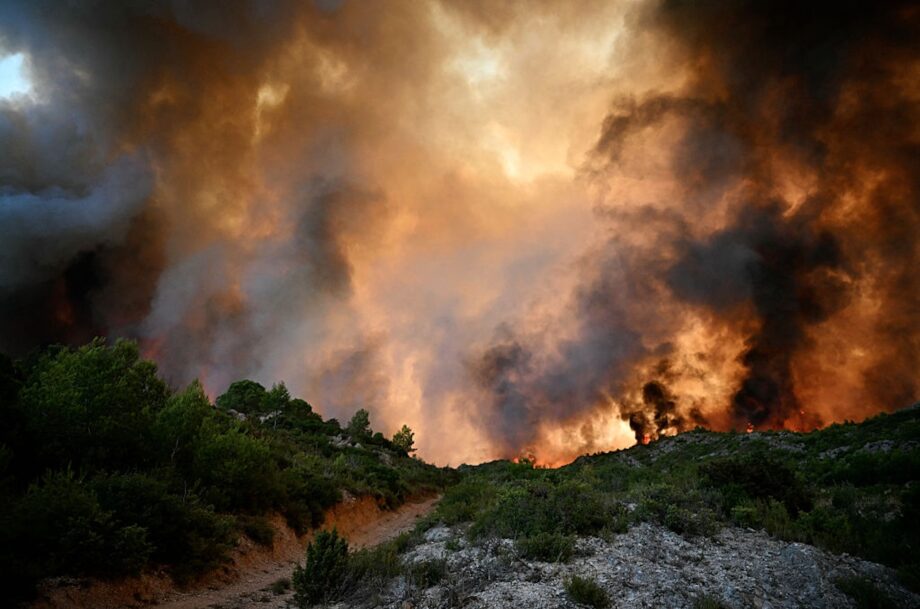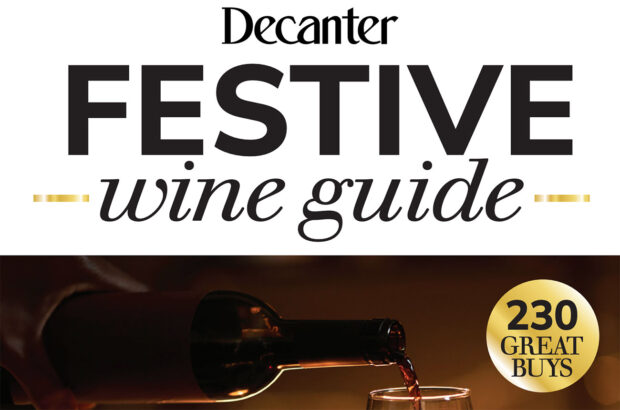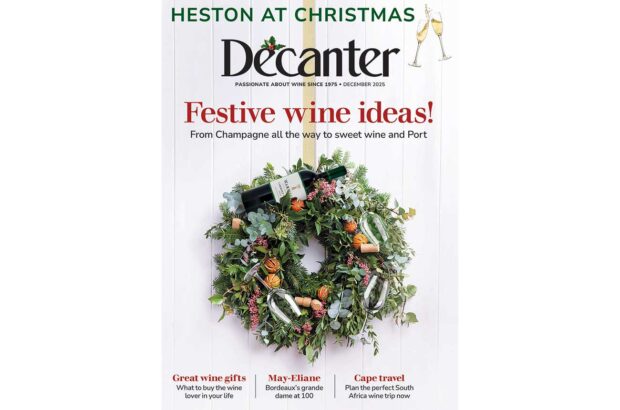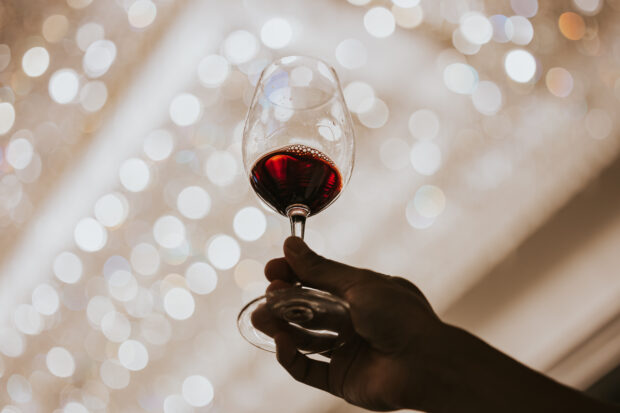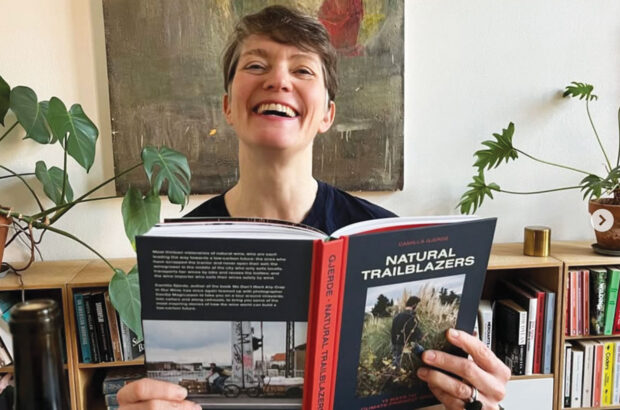Wildfires have been reported across Europe amid extreme heat warnings, and a ferocious blaze that began last week in the Aude department of southern France has left one person dead, more than 20 injured and burned more than 17,000 hectares of land.
Some winemakers in the Corbières area reported severe damage from the Aude fire. It’s now contained, amid media speculation about whether a cigarette butt could have sparked France’s largest wildfire in more than 70 years.
‘My vineyard is 90% destroyed,’ said vigneron Sophie Guiraudon, of organic Clos de l’Anhel in the village of Montlaur, close to where the blaze began.
‘I have lost about nine hectares [out of] 10 hectares of vines,’ she told Decanter.
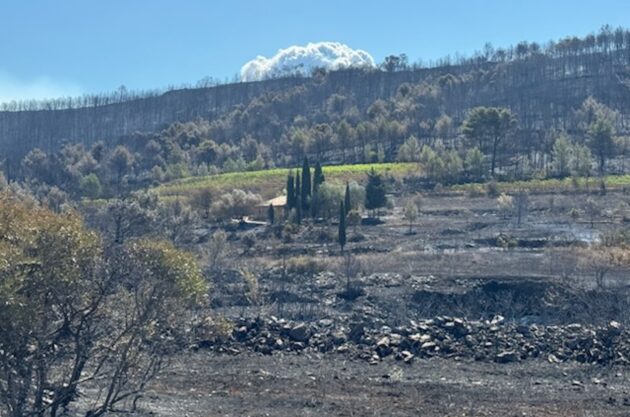
The aftermath of the fire…Photo Credit: Courtesy of Sophie Guiraudon, of Clos de l’Anhel.
While her bergerie building survived, trees and hedges planted by Guiraudon since arriving in Corbières in 2000 are gone. ‘All the landscape is just black, without life. I have thought about cicadas, birds, insects…’
She described a mix of emotions ranging from initial disbelief to anger and then a ‘deep malaise’, but was thankful for ‘amazing’ messages of support from friends and trade professionals.
Wine cooperative Cellier des Demoiselles in St-Laurent de la Cabrerisse said 80% of its vines were affected.
‘Some were more than 60 or 70 years old, a unique wine heritage that cannot be replaced,’ said the cooperative, founded in 1914, on a funding page created via the On Participe website to help protect the livelihoods of around 40 families.
Initial estimates suggested around 800 to 900 hectares of vines were inside the fire perimeter, although a full damage assessment wasn’t yet available.
Another 400 to 500 hectares could be affected by smoke, said Jean-Marie Fabre, president of the Vignerons Indépendants de France trade association, but he added final figures could be lower.
Fabre, who’s Domaine de la Rochelierre is only a few kilometres from the fire zone, visited winemakers last week and told Decanter he couldn’t recall seeing a fire of such ‘magnitude, violence and speed’. Many firefighters were saying the same thing.
Fabre also spoke of producers’ pre-existing difficulties.
Yields in recent vintages have been curtailed by climatic conditions, notably drought, even if the quality of many wines has been strong – as noted by Natalie Earl, Decanter’s regional editor for France, in a comprehensive Languedoc tasting report.
Fabre said signs of a promising 2025 crop, with yields approaching more normal levels, ‘gave a lot of hope to winemakers who had experienced a difficult three years’. For some, those hopes have been dashed.
Yet, this is a relatively large region. Despite reports of ash falling over the nearby city of Narbonne last week, some wineries away from the immediate fire zone were still hopeful for the 2025 vintage.
Picking has begun at Fabre’s Domaine de la Rochelierre in Fitou and he reported ‘very good quality’ fruit, despite initial concerns about smoke. He added, though, ‘We must wait until we have vinified everything to confirm that we don’t have any smoke impact.’
The Corbières AOC appellation body described the blaze as a ‘nightmare’ and thanked fire crews for their hard work.
Posting on Instagram, it cited other fires that have affected wine country this year and said summer 2025 will be etched in memory as the ‘summer of hell’. But, it expressed the community’s determination to rebuild and rise again.
Fabre said he was in contact with government officials regarding urgent aid to help affected winemakers get through the coming year.
‘If we are capable of giving them these means, I remain convinced that [this is] one of the finest wine regions in France.’
Meeting the climate challenge
Looking further ahead, Fabre said the French government must understand the climatic changes affecting the nation, and particularly Languedoc-Roussillon, and help producers in their efforts to meet the challenge.
If not, he warned that in 10 or 15 years it might be too late to turn back, but he added, ‘I am optimistic.’
There has also been debate about whether uprooting vineyards has contributed to wildfires spreading more easily, particularly as the French government has returned to the policy of compensating growers to grub-up, to curb overproduction.
Fabre said it’s true that vineyards can act as firebreaks, but he said the debate misses the point.
Changing consumer tastes are a key prompt for growers choosing to uproot in France, and in Languedoc a primary reason is the economic realities of lower yields linked to climate change, he noted. ‘When the vineyard earns you less money than it costs to produce, at some point one has to stop.’
Wildfires in Europe and US
Wildfires were burning in other parts of Europe, although it wasn’t clear if vineyards had been impacted. In July, vineyards in parts of Cyprus were reportedly damaged in a large blaze, reported the Cyprus Mail.
On the US west coast, wine officials in central California were monitoring the large Gifford fire.
Further north, the Burdoin fire on the Washington State side of the Columbia River Gorge has burned more than 4,400 hectares (11,000 acres).
Syncline Winery, in Lyle, reported damage. ‘The fire burned through about six acres (2.4 hectares) of vineyard,’ said Syncline vigneron and cofounder James Mantone via email. ‘About 1/2 – 3/4 acres are most likely dead, as these were mostly young vines and didn’t have the mass to resist the fire.’
He added, ‘We expect the entirety of our estate fruit to be smoke impacted. We will be sending out for laboratory testing on the affected vines later this week and next.’


